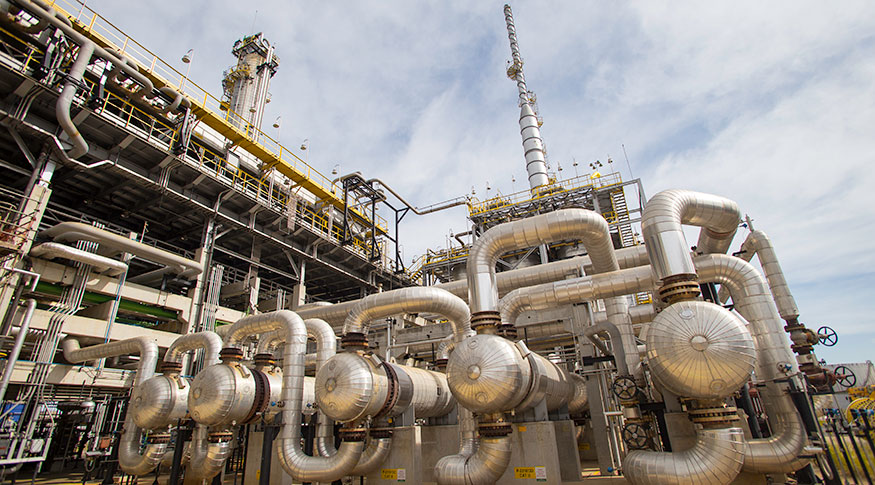National industry
Industrial output retreats 0.6% in August, with drop concentrated in 8 activities
October 05, 2022 09h00 AM | Last Updated: October 05, 2022 05h23 PM

The industrial production dropped 0.6% between July and August, offsetting the advance of 0.6% it had registered in the previous month. With these results, this sector is still 1.5% below the pre-pandemic level (February 2020) and 17.9% below the record level of May 2011. It grew 2.8% compared with August 2021. Industry accumulates a drop of 1.3% in the year and of 2.7% in 12 months. The data come from the Monthly Survey of Industry (PIM), released today (5) by the IBGE.
“The industrial production improved its pace along 2022, which is especially noticed in the higher frequency of positive figures along the year: it advanced in five out of eight months of 2022. However, it dropped this month, though concentrated in few activities, since only eight out of 26 activities recorded negative rates,” explains André Macedo, the manager of the survey.
Among the activities, the biggest negative influence for the month´s result over the previous month came from the sector of coke, petroleum products and biofuels (-4.2%), which retreated once again after growing 1.8% in the previous month. “The products of this industrial sector suffered a widespread loss with the reduction in the production of diesel fuel, fuel oils, gasoline and alcohol, among others. Nevertheless, that activity shows a positive behavior in longer comparisons. In other words, the drop in August is somewhat punctual,” clarifies the researcher.
Other negative contributions came from the industries of food products (-2.6%), interrupting three consecutive months of rises, a period in which it accumulated a growth of 6.0%; and from mining and quarrying industries (-3.6%), offsetting part of the cumulative advance of 4.6% in June and July.
“Those three segments - petroleum products, food and mining - were the ones that mostly pressed industry as a whole. Together, they account for nearly 36% of the industrial sector,” explains Macedo.
Among 18 activities that expanded their output, motor vehicles, trailers and bodies (10.8%), machinery and equipment (12.4%) and other chemicals (9.4%) exerted the major impacts. According to the manager of the survey, those activities dropped last month and they are now offsetting the retreats.
“The activity of motor vehicles offset the drop of 6.0% registered in the previous month; machinery and equipment interrupted two consecutive months of reduction in the output, a period in which it accumulated a loss of 13.7%; and other chemicals grew once again after declining 7.8% in July,” adds him.
Among the major economic categories, semi and non-durable consumer goods (-1.4%) and intermediate goods (-1.4%) reported negative rates over July, both of them offsetting part of the advance of the previous month: 1.5% and 1.8%, respectively. On the other hand, the sectors of durable consumer goods (6.1%) and of capital goods (5.2%) rose, the former growing once again after retreating 6.7% in July and the latter interrupting two consecutive months of drops, a period in which it accumulated a loss of 5.2%.
“With these results, the industrial sector still does not recover the losses of the recent past and, despite the improvement in the flow of inputs, raw material and stocks, the situation remains far from normal, which directly affects the production cost,” analyzes Macedo.
On the side of the domestic demand, the researcher also highlights that, despite the measures to increase the income, families remain negatively affected by interests and inflation at high levels. “It increases the costs of credit, reduces the available income of households and maintains the default rate at higher levels.”
With a low comparison basis, industry grows 2.8% over August last year
Compared with the same period in 2021, the industrial sector grew 2.8%, interrupting two consecutive months of negative figures in this type of comparison. Positive rates prevailed, with increases in all four major economic categories and in 15 out of 26 sectors surveyed.
“It is important to highlight that the growth recorded in the monthly index of August was not only influenced by the calendar effect, since August this year had one more business day than in 2021, but also by the low comparison basis, since the industrial activity retreated 0.6% in August 2021 and then interrupted 11 consecutive months of positive rates,” explains Macedo.
Among the activities, the major positive influences came from motor vehicles, trailers and bodies (19.3%), other chemicals (10.6%), coke, petroleum products and biofuels (5.0%) and food products (3.2%). Among 11 dropping activities, mining and quarrying industries (-7.3%) exerted the most intense influence in relation to August 2021, pressed by the smaller production of iron ore and crude petroleum oil.
More on the survey
PIM Brazil has been producing short-term indicators since the 1970s regarding the behavior of the real product of mining and quarrying and manufacturing industries. From May 2014, the release of a new series of monthly industrial production indices began, after a reformulation to: update the sample of activities, products and respondents; prepare a new weighting structure for the indices based on the most recent industrial statistics, in order to harmonize with the needs of the implementation the National Accounts Series - reference 2010; and to adopt the new classification of activities and products used by other industry surveys from 2007 onwards, namely: the National Classification of Economic Activities - CNAE 2.0 and the List of Industrial Products - PRODLIST-Industry.
The survey results can also be consulted at the Sidra database.




















